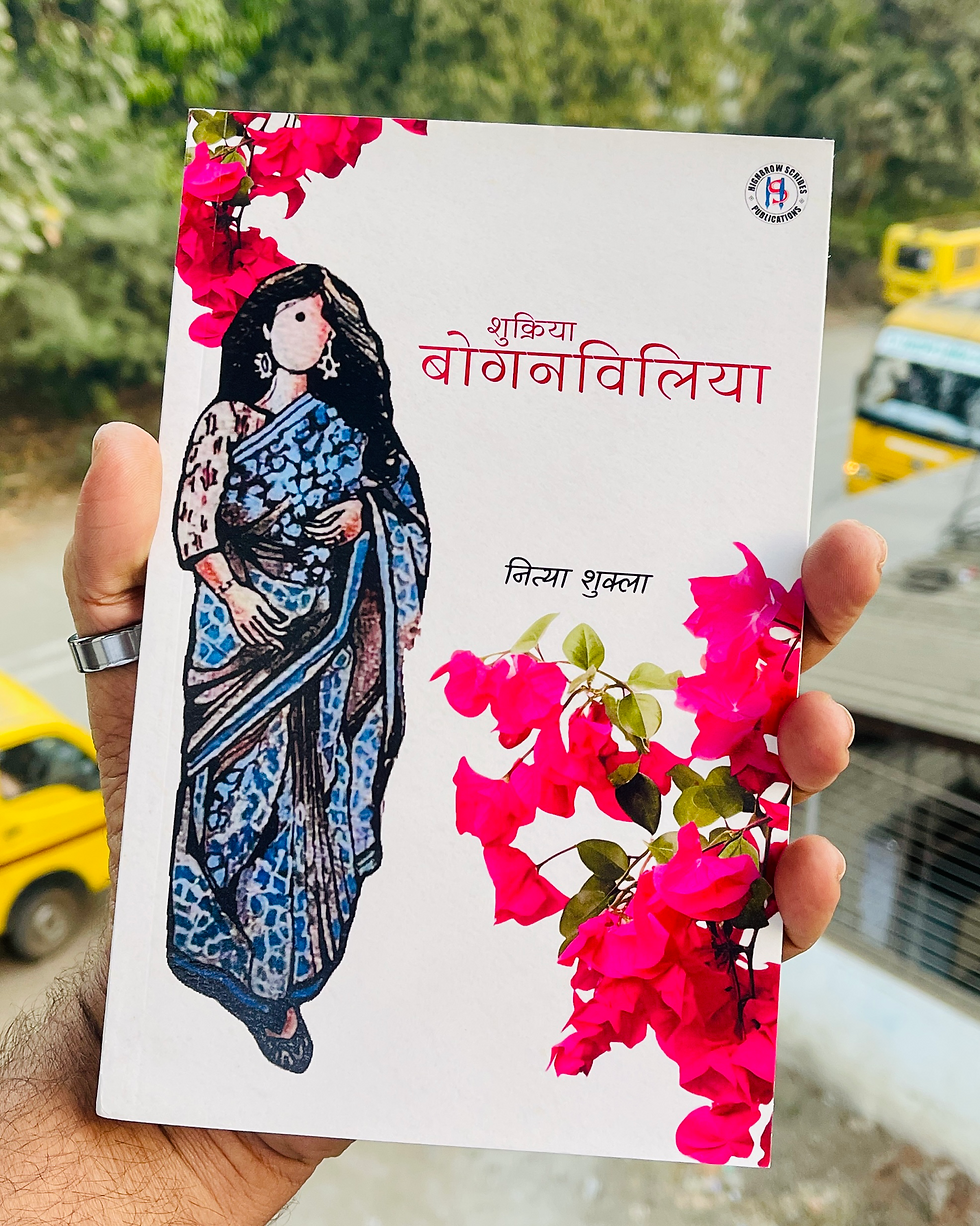The Power of Words: How Book Blurbs Drive the Success of Indian Publishing
- Sameer Gudhate
- Feb 1, 2023
- 4 min read
Book blurbs are an essential marketing tool in the publishing industry in India. They play a crucial role in attracting readers, generating interest, and driving sales. Indian publishers have recognized the importance of book blurbs and invest time and effort into crafting compelling summaries that accurately capture the essence of the book.
One of the most significant examples of book blurbs in India is the work of Amish Tripathi. Tripathi's Shiva Trilogy, a series of three novels based on the Hindu god Shiva, was an instant bestseller in India. The blurbs on the back covers of the books were crucial in generating interest and driving sales. The blurbs for the three books - The Immortals of Meluha, The Secret of the Nagas, and The Oath of the Vayuputras - were carefully crafted to convey the epic scale of the story and the central character's importance. For example, the blurb for The Immortals of Meluha reads:
"Today, He is a God. 4000 years ago, He was just a man. The hunt is on. The sinister Naga warrior has killed his friend Brahaspati and now stalks his wife Sati. Shiva, the Tibetan immigrant who is the prophesied destroyer of evil, will not rest till he finds his demonic adversary. His vengeance and the path to evil will lead him to the door of the Nagas, the serpent people. Of that he is certain. The evidence of the malevolent rise of evil is everywhere. A kingdom is dying as it is held to ransom for a miracle drug. A crown prince is murdered. The Vasudevs – Shiva's philosopher guides – betray his unquestioning faith as they take the aid of the dark side. Even the perfect empire, Meluha, is riddled with a terrible secret in Maika, the city of births. Unknown to Shiva, a master puppeteer is playing a grand game. In a journey that will take him across the length and breadth of ancient India, Shiva searches for the truth in a land of deadly mysteries – only to find that nothing is what it seems."
The blurb sets up the story's stakes and hints at the challenges that the protagonist will face. It is designed to intrigue the reader and encourage them to pick up the book and dive into the story.
Another example of book blurbs in India is the work of Chetan Bhagat. Bhagat's novels, which often deal with contemporary Indian society and the challenges faced by young people, have been immensely popular in India. The blurbs for Bhagat's books are designed to highlight the relatable characters and the themes that resonate with Indian readers. For example, the blurb for Bhagat's novel, 2 States, reads:
"Love marriages around the world are simple: Boy loves girl. Girl loves boy. They get married. In India, there are a few more steps: Boy loves Girl. Girl loves Boy. Girl's family has to love boy. Boy's family has to love girl. Girl's Family has to love Boy's Family. Boy's family has to love Girl's Family. And if the Boy and Girl still love each other, they get married. Welcome to 2 States, a story about Krish and Ananya who are from two different states of India, deeply in love, and want to get married. Of course, their parents don't agree. To convert their love story into a love marriage, the couple has a tough battle ahead of them."
The blurb highlights the challenges faced by young couples in India and sets up the central conflict of the story. It is designed to resonate with Indian readers who may have experienced similar challenges and encourage them to read the book.
In addition to these examples, book blurbs play an essential role in the success of many other Indian books. The blurbs are carefully crafted to entice readers, provide a sense of the book's genre and tone, and convey the central themes and conflicts. They can also help readers navigate the crowded publishing landscape in India by providing a quick summary of the book's contents and target audience.
One notable trend in Indian publishing is the increasing focus on blurbs that highlight diverse voices and perspectives. Indian publishers recognize the importance of representing a broad range of experiences and perspectives in their books, and blurbs are one way to signal this to readers. For example, the blurb for the anthology, The Dalit Women Speak Out, reads:
"Through these 18 personal narratives, Dalit Women Speak Out showcases the resilience, courage, and hope that has kept these women alive and fighting. These women have faced unimaginable violence and discrimination in their lives, but they have not been silenced. They have fought for their rights, their dignity, and their very existence. The Dalit Women Speak Out is a powerful testament to the strength and resilience of these women, and a call to action for all of us to stand with them."
The blurb highlights the important stories and experiences of Dalit women and encourages readers to engage with their narratives.
In conclusion, book blurbs are a crucial marketing tool in the Indian publishing industry. They play a vital role in attracting readers, generating interest, and driving sales. Indian publishers invest time and effort into crafting blurbs that accurately convey the essence of the book and appeal to readers. The examples of Amish Tripathi, Chetan Bhagat, and the focus on diverse voices and perspectives in Indian publishing demonstrate the importance of book blurbs in shaping readers' perceptions of a book and its potential audience.







Comments